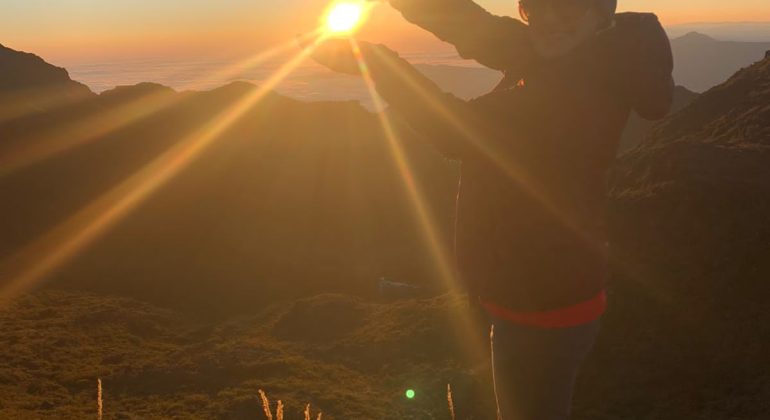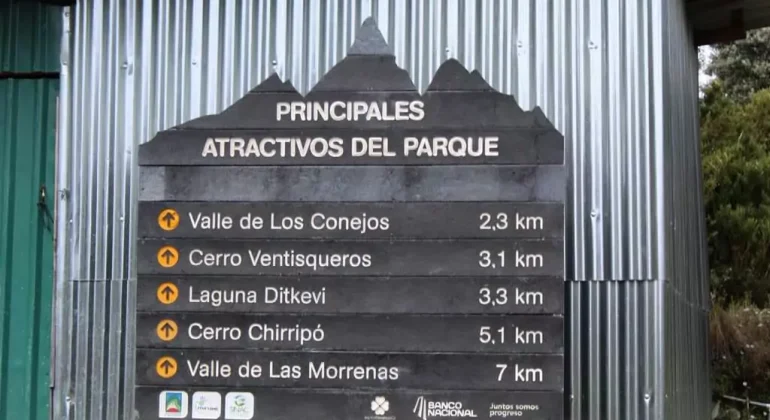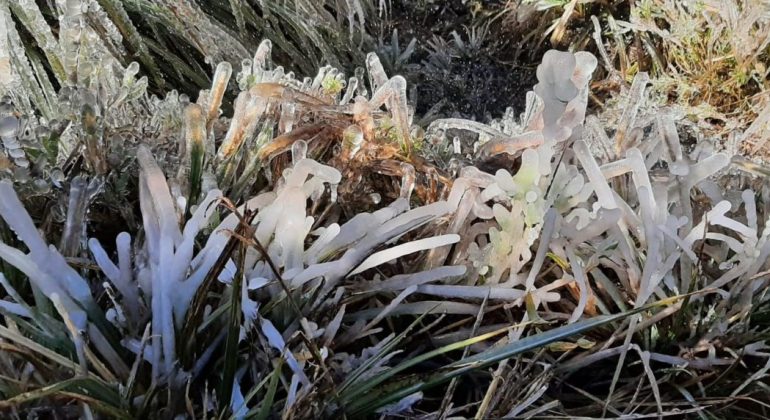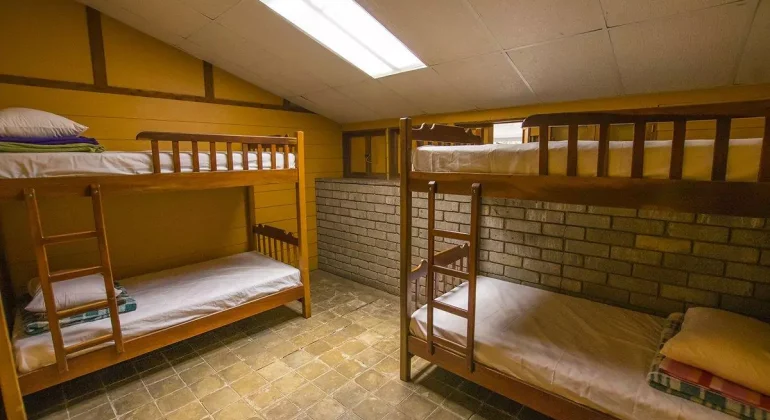
What to Pack for Chirripó: Essential Hiking Tips
Guide to hiking Chirripó: What to bring and essential Tips Are you ready to take on the challenge of hiking Chirripó, the highest mountain in Costa Rica? Proper preparation will make a significant difference in your experience. Since packing for such an adventure can feel overwhelming, this guide will help you organize everything efficiently. Below, you’ll find practical tips on what to bring, along with key recommendations to ensure your hike is comfortable, safe, and unforgettable. Pack Smart for your Chirripó Hike To optimize space and accessibility, it’s best to divide your gear into three separate bags. This method ensures that you have everything you need at the right moment while avoiding unnecessary weight. Here’s how to pack efficiently: Bag #1: Main Gear – Light and Essential This bag, which will be transported by porters or mule drivers, should be as lightweight as possible. Since the transportation cost depends on weight, packing wisely will help you avoid extra charges. Packing List for a 4-Day, 3-Night Tour 3 warm jackets 1 pair of warm pants 2 pairs of Smartwool socks 1 pair of sandals or closed shoes for the refuge 3 sports or polyester t-shirts 2 extra hiking pants or leggings Gloves, hat, and scarf 3 sets of polyester underwear 3 pairs of hiking socks 1 rain jacket or poncho Packing List for a 3-Day, 2-Night Tour 3 warm jackets 1 pair of warm pants 2 pairs of Smartwool socks 1 pair of sandals or closed shoes for the refuge 3 sports or polyester t-shirts 2 extra hiking pants or leggings Gloves, hat, and scarf 3 sets of polyester underwear 3 pairs of hiking socks 1 rain jacket or poncho Essential personal items for both tours Soap and deodorant Towel or personal cloth Lip balm Extra batteries (electricity is limited at the refuge) Toothbrush and toothpaste Bag #2: Essentials for the ascent to Base Crestones Carrying a lightweight backpack during the hike is crucial. This bag should contain the necessities for the journey to Base Crestones. Energy snacks for quick fuel Rain jacket or poncho to stay dry Sufficient water for hydration Basic first aid kit, including bandages and pain relievers Bag #3: Post-Hike Comfort Items After completing your hike, having a fresh set of clothes and hygiene items will help you feel comfortable. Since this bag will remain in your vehicle or hotel, it won’t add extra weight to your climb. Clean clothing, including fresh underwear and comfortable pants Spare shoes to relieve your feet after the trek Towel Personal hygiene items like moisturizer and deodorant Remember, this bag will be waiting for you at your vehicle or accommodation. Additional tips for a successful Chirripó Hike Packing properly is just one part of preparing for Chirripó. To make your hike as smooth as possible, keep these extra tips in mind: Avoid brand-new hiking shoes – Breaking in your footwear beforehand prevents blisters and discomfort. Train in advance – Since the hike is physically demanding, regular walks and endurance training will help you build stamina. Apply sunscreen – Even in cooler weather, sun exposure can be intense, especially in the morning hours. Stay hydrated – Dehydration at high altitudes can be dangerous, so always carry enough water. Check the weather forecast – Chirripó’s climate is unpredictable. Reviewing the forecast will help you prepare for sudden changes. Are you ready for the challenge? Hiking Chirripó is one of Costa Rica’s most thrilling and rewarding experiences. Now that you know what to bring and how to prepare, you’re set for an unforgettable adventure. Take time to enjoy the breathtaking landscapes, embrace the journey, and celebrate your achievement as you reach the highest peak in Costa Rica! Share Your Experience & Join the Community! Before we say goodbye, we invite you to follow us on Instagram at @caminataachirripo and tag us using the hashtags: 📍 #caminatasalchirripo 📍 #yosubialchirripo 📍 #puntomasaltodecostarica 📍 #tourschirripo We’d love to hear about your experience! Feel free to leave us a review on Google or TripAdvisor. Also, check out this video with more recommendations for your Chirripó adventure. Click and get ready for an unforgettable experience! 🎥🏔️

Best Attractions in Chirripó National Park
Best Attractions in Chirripó National Park Chirripó National Park is undoubtedly one of Costa Rica’s most breathtaking natural destinations. The park is home to a wide array of stunning landscapes, offering something for every kind of nature lover and adventurer. Below is a list of the best attractions in Chirripó National Park that you definitely won’t want to miss during your visit: Chirripó Summit First and foremost, the Cerro Chirripó, Costa Rica’s highest peak, is the highlight of any visit to the park. Standing at 3,821 meters (12,536 feet) above sea level, this summit offers a challenging, yet immensely rewarding hike. On clear days, you’ll be able to catch a rare and spectacular view of both the Pacific and Atlantic oceans. From the top, you’ll also be able to see the San Juan and Morrenas lakes, as well as the Turrialba, Irazú, and Barú volcanoes, located in Panama. Without a doubt, this is one of the best attractions in Chirripó National Park. The Crestones Next, the Los Crestones peaks, rising to 3,721 meters (12,205 feet), are another incredible attraction. These dramatic and iconic rock formations were declared a National Symbol of Costa Rica in 2011. Among them, the famous “Aguja” rock, or “Needle,” stands at an impressive 60 meters tall. From here, you can enjoy panoramic views of Cano Island, Cerro Ami, Cerro Amó, and the General Valley, showcasing the diverse beauty of the region. The surrounding landscapes provide a perfect mix of rugged terrain and serene vistas, making it one of the top spots to visit. Cerro Terbi Just a 10-minute walk from Los Crestones will lead you to Cerro Terbi, standing at 3,760 meters (12,336 feet). This location offers breathtaking views of the Sabana de los Leones and Cerro Ventisqueros, making it an ideal spot for relaxing and taking in the scenery. The views from here are a must-see and offer a unique perspective of the park’s rich natural beauty. Valle de los Conejos Alternatively, Valle de los Conejos serves as the starting point for exploring most of the park’s attractions. From here, you can observe the U- and V-shaped formations of the valleys, which were formed as a result of glaciation. Though the valley was once abundant with rabbits, climate change and human activity have made sightings less frequent, especially during the day. Nonetheless, this area remains an important starting point for your adventure. Cerro Ventisqueros Another must-see attraction is Cerro Ventisqueros, which stands at 3,812 meters (12,507 feet). The name “Ventisqueros” comes from the constant winds in the area, which contribute to its rugged character. Although the trail to this peak is somewhat technical, it is well worth the effort. The panoramic views from this location are some of the most stunning in the entire park, making it a favorite for many visitors. Laguna Ditkevi Next on the list is Laguna Ditkevi, one of the most visited lagoons in the park due to its easy accessibility. According to an indigenous legend, entering the lagoon while impure would summon a dragon to devour you, though if the dragon believed you were worthy of forgiveness, it would allow you to leave unharmed. Whether or not you believe the legend, this mystical lagoon is a must-see on your visit to Chirripó National Park. Laguna San Juan Known by several names, including El Pececito and Lagunita, Laguna San Juan is the second-deepest lagoon in Costa Rica, with a temperature of 14°C. This lagoon is the source of the Chirripó Pacífico River and is considered the least visited lagoon in the park. Despite its lesser-known status, Laguna San Juan is still a beautiful and serene spot to visit. Valle de las Morrenas As a result of the sediments that concentrate along its shores, Valle de las Morrenas is another interesting attraction in the park. With a temperature of 14°C, it is the second-most visited lagoon in the region and offers peaceful surroundings and picturesque landscapes. Sabana de los Leones Finally, Sabana de los Leones has gained popularity in recent years, especially as part of the San Jerónimo-Base Crestones route. The name is thought to originate from a story of a lion sighting, but others believe it refers to the grass in the area that, when the wind blows, resembles a lion’s mane. This spot is now more accessible, with day trips to Sabana de los Leones available from San Jerónimo de San Pedro. Chirripó Map Before you embark on your journey, be sure to check out the map created by the national park, which will guide you to all these amazing attractions. To conclude, we hope this guide has been helpful in planning your visit to the best attractions in Chirripó National Park. Which of these incredible spots are already on your bucket list? We’d love to hear which attraction you’re most excited about! If you have more questions about Chirripó, feel free to click here to learn more. Don’t forget to share your photos using #yosubialchirripo #caminatasalchirripo #puntomasaltodecostarica!

Why does ice form on Chirripó?
Why does ice form on Chirripó? Cerro Chirripó, the highest point in Costa Rica, is not only a stunning destination but also home to a fascinating natural phenomenon. Why does ice form on Chirripó? This event occurs due to the extreme temperatures during the dry season, offering visitors a glimpse into the unique beauty of Costa Rica’s highest peak. In fact, this phenomenon is one of the reasons why many adventurers come to experience the beauty and mystery of Chirripó. How Ice forms on Chirripó During the dry season, from December to April, you might wonder why does ice form on Chirripó? The answer lies in the extreme temperatures that occur in the early morning hours. As a result, temperatures can drop between 0°C and 3°C, and the lowest recorded temperature was an astonishing -9°C. Therefore, these frigid conditions cause the water in puddles and small ponds along the trail to freeze, forming delicate ice sheets that crack underfoot as you walk. Undoubtedly, this phenomenon adds a magical touch to your hike, making it an experience you’ll never forget. A natural spectacle near the refuge So, why does ice form on Chirripó? One of the best places to witness this natural spectacle is near the refuge, where ice becomes an art form. A small water leak moistens the “chusqueas” plants, a type of bamboo typical of the páramo. As the temperature drops at night, the water freezes, creating intricate ice formations. With the majestic Crestones in the background, this location is a must-see for anyone visiting Chirripó. Dry season: the best time to visit If you’re asking yourself why does ice form on Chirripó, the dry season is your answer. From December to April, the combination of low temperatures and clear skies creates perfect conditions to witness the ice and enjoy other natural wonders. During these months, you can also marvel at colorful sunrises, breathtaking views of both the Pacific and Atlantic Oceans, and distant volcanoes, including Turrialba and Barú. Clearly, the dry season offers the best chance to experience Chirripó’s magic, with a higher likelihood of witnessing this natural ice phenomenon. An experience that has it all Visiting Chirripó offers more than just the unique experience of ice formation—it’s an adventure filled with breathtaking landscapes and unforgettable moments. From the satisfying crunch of ice underfoot to the towering beauty of the Crestones, every step of your journey is a reminder of Costa Rica’s raw natural splendor. In addition, during the dry season, you’re more likely to witness colorful sunrises, feel refreshing breezes reminiscent of Christmas, and enjoy vibrant blue skies. On clear days, the views are even more spectacular, with glimpses of both oceans, the Turrialba Volcano, and even the distant Barú Volcano in Panama. Now that you understand why ice forms on Chirripó, it’s time to experience it for yourself. Don’t forget to capture these awe-inspiring moments and share your photos with us! For more details, explore our blog section and frequently asked questions.

First female porter of Chirripó
First Female Porter of Chirripó: The Inspiring Story of Karen Garita Today, we are proud to share the story of a remarkable woman who, at just 22 years old, made history by becoming the first female porter at Chirripó National Park. Karen Garita, from San Gerardo de Rivas, achieved this incredible milestone in 2021, and her journey is one of hard work, perseverance, and breaking barriers. The essential role of porters in Chirripó Porters play a vital role in the daily operations of Chirripó National Park,. They transport essential supplies, such as food, materials, and luggage, for both tourists and park rangers. This physically demanding job requires great endurance, as porters carry heavy loads along the rugged trails. Additionally, it provides a vital source of employment for over 60 local families in the region. Karen’s motivations: Why she became a porter? For Karen, her decision to become a porter stemmed from a combination of motivations. Primarily, she wanted to improve herself both spiritually and professionally. In addition, she sought a job she was passionate about while also needing an extra source of income alongside her family’s agricultural work. Karen’s love for horses began at just 13 years old, and this passion pushed her to pursue this challenging path with determination. A day in the life of a porter A typical day for a porter begins long before dawn. At midnight, porters start by preparing the horses on local farms. By around 2:00 a.m., they set off on their journey toward the Base Crestones shelter. After a long hike, they reach their destination at approximately 6:00 a.m., where they unload the supplies, take a break for breakfast, and prepare for the next phase of their day. The workday ends around 10:30 a.m., when they return home after a long and physically demanding morning. A powerful message for women Karen shared an inspiring message for all women who might face obstacles in their paths:“I don’t believe it’s a matter of gender, but rather of willpower and effort. Stay strong, and fight to reach your goals with determination and courage.” Being the first female porter in Chirripó fills Karen with immense pride. She is honored to be part of a team that has worked tirelessly and with great dedication for many years. Her message is clear: gender is not a barrier to success; effort and passion are what truly matter. A tribute to Karen’s hard work and dedication We are incredibly proud of Karen’s achievements and the challenge she has taken on. Her journey is a testament to the strength and resilience of women everywhere. We are confident that she will continue to reach new heights in both her personal and professional life. Moreover, we want to express our deepest gratitude to all the porters who, like Karen, work hard to keep Chirripó National Park running smoothly every day. Their tireless efforts ensure that visitors can enjoy this incredible natural wonder. We encourage you to leave a message of support and encouragement for Karen, as she continues to break barriers and chase her dreams.

What are the rooms like at Base Crestones in Chirripó?
What are the rooms like at Base Crestones? Hiking up Chirripó is, without a doubt, one of the most thrilling experiences an adventurer can have. The mere thought of standing at the highest point in Costa Rica is an incredible achievement, and the challenge of reaching this natural paradise attracts many. However, a common question arises: What are the rooms like at Base Crestones? Or even, Where is the lodge located? In this blog, we’ll provide you with all the essential information so you can make the most of your experience. The Base Crestones lodge First, it’s important to note that the lodge is located 14.5 km from the community of San Gerardo de Rivas. It is the only accommodation specifically designed for overnight stays within Chirripó National Park, meaning camping inside the park is strictly prohibited. If you were wondering whether this is the same lodge known as Base Crestones the answer is yes! It takes its name from its stunning location facing Los Crestones, one of the park’s most iconic rock formations. Lodge capacity and layout The lodge can accommodate 60 people per night and is divided into two sections: Section A: Located on the first floor. Section B: Located on the second floor. Upon arrival, you’ll be surprised by how spacious and well-organized the lodge is. It provides all the essential amenities to rest after an intense day of hiking. Rooms at Base Crestones So, what are the rooms like at Base Crestones? The rooms are designed for four people, featuring two bunk beds (two people on the bottom and two on the top). All rooms are shared, meaning private rooms with bathrooms are not available. Each bed comes with: A mattress Sheets Pillows Blankets An individual locker for your belongings Currently, sleeping bags are not available for rent, so it’s important to bring your own blankets. If needed, blankets can be rented at the lodge. Sharing a room For solo travelers, keep in mind that rooms are assigned randomly. The park guarantees you a bed, but not a private room. However, if you’re traveling in a group, you can request to be assigned together. Groups of four can be accommodated in the same room, preventing any inconvenience. And to add a bit of fun to the experience, you might even find yourself in a friendly game of “rock, paper, scissors” to decide who gets the top bunk! A great way to bond with fellow adventurers. We hope this information helps you understand what the rooms at Base Crestones are like. While simple, the lodge is cozy and comfortable, offering the perfect place to rest and recharge after a challenging hike. Enjoy your journey and share your experience with us using #caminatasalchirripo and #yosubialchirripo!
